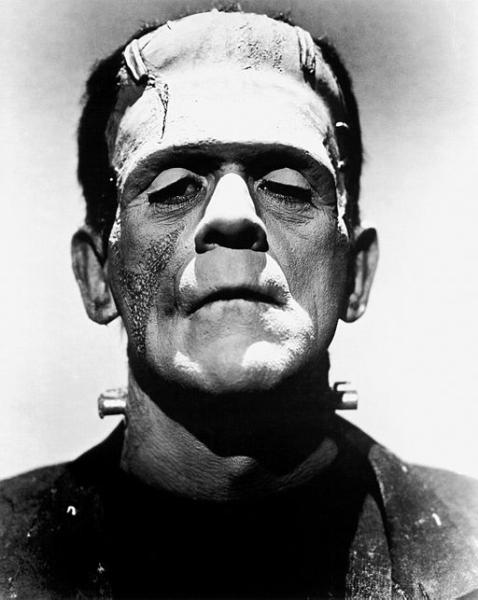How time flies, just a short 200 years since Mary Shelley wrote Frankenstein, electrifying the world with a new version of the tale of Prometheus and the quest for fire. In honor of Luigi Galvani, Galvinism and of course the monster himself I wanted to share an article about a direct descendant, bioelectricity.
Bioelectricity refers to the electrical potentials and the current produced by living creatures. While the electric eel may come to mind, our bodies use bioelectricity most notably in nerve conduction sending signals throughout the body. Because the cell wall is permeable to some chemicals and not others, electric charges can build up and subsequently use for a variety of actions. A recent article in Quanta discussed bioelectricity’s role, not in the day-to-day nerve communication business, but in guiding embryologic development.
Embryology has a number of components; it is a long way from one cell to many different types, the creation of organs and knowing how they are all organized. The media has popularized stem or pluripotential cells that can become anything, brain, liver or lung. When we think about embryology if at all, DNA is often the first “science” to come to mind; for the most part, those double helices have taken us quite a distance since 1953, Watson and Crick. But the enormous potential of DNA took up “all the oxygen” in the embryologic room of possibilities. If DNA contained the instructions, what mechanisms guide how those many cells organize into tissues and organs? Think about it, how does the developing embryo know that the kidneys belong in the abdomen and not somewhere else? For that matter, how do the cells know to organize into three layers when forming arteries?
Much of the work about the structure has involved three-dimensional mechanical issues. Adjacent, but different cell types will form recognizable structures if we provide them with scaffolding to build upon – setting themselves up in specific areas. The organization of tissue is somewhat of a local affair, and it turns out that one of the guiding forces may be cellular bioelectricity.
Each cell generates an electrical gradient based upon its individual cell wall. When you add multiple cells and multiple types together, they form spatial electrical patterns. These patterns have been shown to control “organ identity, [and] positional information” among other aspects of the developing organism. For example, in frogs, these patterns direct where eyes will form and perturbation of that spatial differentiation of cell potential results in misfigured frog faces. In flatworms, alteration of the electrical field can make a group of cells form the head rather than the tail. The bioelectrical environment resulting from individual cell’s electrical potential can guide a great deal of complexity.
Scientists have found that the electrical potential of a cell’s wall is not only a reflection of the wall’s selective permeability to certain chemicals but also influences what chemicals are allowed in. As a result, local electrical gradients enable the entry of specific chemical messengers, turning on or off embryologic development within the cell. While our understanding of this aspect of bioelectricity is still incomplete it does suggest that we might be able to manipulate these gradients sometime in the future – manipulations that might correct developmental defects or even facilitate limb regeneration.
And while it has nothing to do with re-animating the dead it is still nice to see Mary Shelley reaching out across the centuries, “None but those who have experienced them can conceive of the enticements of science. In other studies you go as far as others have gone before you, but in a scientific pursuit there is continual food for discovery and wonder.”
Source: Quanta Magazine Brainless Embryos Suggest Bioelectricity Guides Growth




